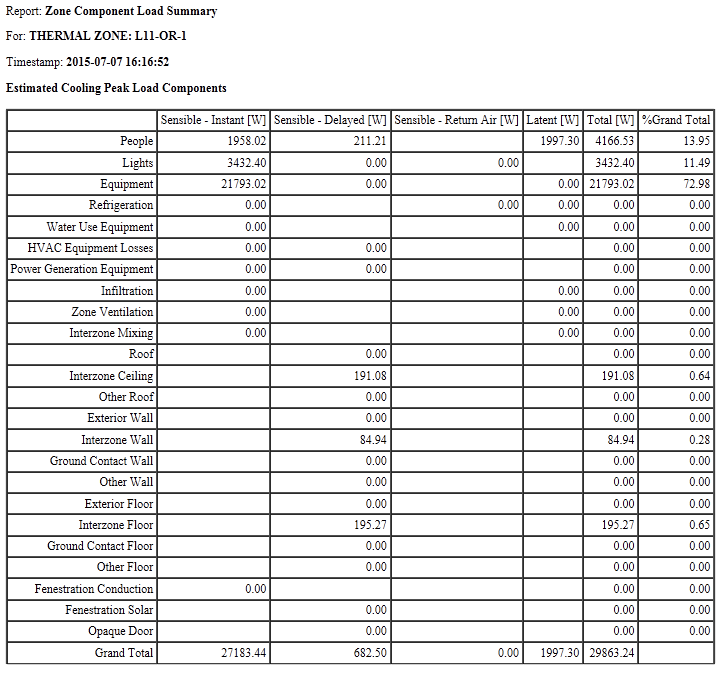Unexpected Cooling Energy Transfer Zone [closed]
I have internal zones with high ACH ventilation requirements. The internal loads are relatively small, and the amount of ventilation provided should create a reheat load that’s required to meet the zone heating setpoint. After running a few simulations, I’m finding that the zone is continually forced into a cooling condition and the supply airflow increases well above the ventilation requirement to meet the zone cooling setpoint.
The peak cooling sensible heat gain component report shows a large heat gain associated with ‘Opaque surface conduction and other heat addition’ that seems to be creating a cooling condition in the zone. Additionally, the 'Annual and peak values - other' report under 'energy meters' shows a Cooling:EnergyTransfer:Zone with a large minimum value. Hourly reports of the surface inside face heat gains show minimal load, well below the values reported above.
My walls are a standard, low mass ‘internal wall’ type and are surface matched to adjacent interior walls. My interior ceiling and floor are also low mass internal constructions with an adiabatic boundary condition.
The air-side ventilation should be more than enough to remove the internal load from the space yet it appears some surfaces are transferring, or storing and releasing a tremendous amount of heat to the zone. Has anyone experienced unusual results associated with internal zone energy transfer? Any more insight regarding the Cooling:EnergyTransfer:Zone value?
UPDATE:
To illustrate the problem, I have provided a zone component load summary showing minor contributions to load resulting from the interzone constructions...

When looking at the annual sensible heat gain contribution, the opaque surface conduction and other heat addition dominate, resulting in a large cooling load and zero heating load...









Have you checked the temperatures of the adjacent zones that share walls with this zone?
@David Goldwasser Yes, adjacent zone temperatures are within the heating and cooling setpoints (70F-75F), no extreme temperatures exist in adjacent zones. A few of the problematic zones mentioned have adjacent zones set to 'ideal air loads'... maybe this is contributing to the issue?